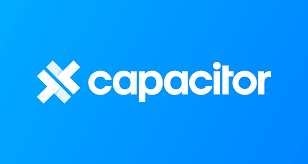Unlocking Cross-Platform Power with Capacitor: A Comprehensive Guide
 Inaamul hasan Shaikh
Inaamul hasan Shaikh
Cross-platform development is driven by the efficiency of writing code once and deploying it across various platforms like iOS, Android, Web, and Desktop.
This approach ensures code reusability, saving time, effort, and reducing the likelihood of bugs. It's cost-effective, requiring a smaller development team and resulting in consistent user experiences across different devices.
Tools like Capacitor enhance this process, allowing developers to build web applications that run natively on multiple platforms with a single codebase. Overall, cross-platform development with tools like Capacitor streamlines the development process, making updates quicker and broadening the app's audience reach.
What is Capacitor ?
Capacitor stands out as a cross-platform native runtime, offering a versatile solution for developers.
It empowers the creation of high-performance mobile applications, ensuring a smooth user experience.
Capacitor extends compatibility, allowing apps to seamlessly run natively on popular platforms like iOS, Android, and more.
The framework incorporates modern web tooling, streamlining the development process for efficiency.
Capacitor represents a significant leap in the evolution of Hybrid apps, introducing the concept of Web Native applications.
Why Capacitor is better than other cross-platform ?
Capacitor specializes in creating Web Native apps, leveraging modern web tools for native-like performance.
It provides full access to native SDKs, allowing developers to incorporate platform-specific features seamlessly.
Capacitor is designed to be versatile, accommodating a range of project types and development styles.
Developed and maintained by the Ionic team, Capacitor benefits from ongoing support, updates, and a strong community.
Developers appreciate Capacitor for its user-friendly approach and integration with popular web development tools.
Representing the next step in Hybrid app evolution, Capacitor addresses limitations of earlier frameworks, offering a more modern and efficient solution.
Capacitor isn't restricted to use only with Ionic or Angular; it's also compatible with React, making it a more versatile and approachable cross-platform solution. This flexibility simplifies the deployment of projects on various platforms, enhancing the overall development experience.
Now lets see how to install Capacitor step by step in your project
Getting Started with Capacitor!
Step 1 : Integrate Capacitor into your existing web application.
npm install @capacitor/cli @capacitor/core
npx cap init
Step 2 : Initialize the installation of the specific native platforms you aim to target in your development environment.
npm install @capacitor/ios @capacitor/android
npx cap add ios
npx cap add android
In summary, Capacitor emerges as a robust and technically streamlined solution for cross-platform development. Its versatility, demonstrated by seamless integration with diverse web frameworks, notably React, underscores its adaptability. The straightforward configuration and initialization processes simplify the deployment of projects across a spectrum of native platforms. By providing developers with a straightforward and efficient toolset, Capacitor exemplifies the convergence of technical prowess and user-friendly design. Embrace the technical simplicity offered by Capacitor and navigate the complexities of cross-platform development with confidence and precision. Elevate your coding experience with Capacitor's technical finesse. Happy coding!
Subscribe to my newsletter
Read articles from Inaamul hasan Shaikh directly inside your inbox. Subscribe to the newsletter, and don't miss out.
Written by
